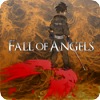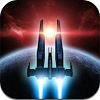So what do we mean by all these numbers, anyway? iFanzine has entered its fourth year of operation and we figure it’s probably worth clarifying our review scale. Is a 3.0 some kind of death knell? Just who do we think should be playing a game that scores a 4.0? Find out below!
 1.0: “So bad, Bear Grylls wouldn’t touch it.” Lurking in the darkest corners of the App Store are games designed to give you absolutely nothing in return for your hard-earned cash; even if they were free, watching paint dry would be preferable to playing them. The ideas behind their gameplay are so utterly unworkable, no update could ever salvage them. Chances are an average iDevice-owning gamer will be able to spot something like this from miles away, so our only purpose in calling it to your attention would be to make fun of it. That isn’t our modus operandus and furthermore, we don’t have a writing team big enough to waste time on games likely to fall into this category just yet — hence the lack of an example in our records. Nevertheless, there may yet come a day when we pick up a game that looks cool in screenshots but stuns us with its vileness, and we’ll give it the dubious distinction of letting its image replace our question mark placeholder here.
1.0: “So bad, Bear Grylls wouldn’t touch it.” Lurking in the darkest corners of the App Store are games designed to give you absolutely nothing in return for your hard-earned cash; even if they were free, watching paint dry would be preferable to playing them. The ideas behind their gameplay are so utterly unworkable, no update could ever salvage them. Chances are an average iDevice-owning gamer will be able to spot something like this from miles away, so our only purpose in calling it to your attention would be to make fun of it. That isn’t our modus operandus and furthermore, we don’t have a writing team big enough to waste time on games likely to fall into this category just yet — hence the lack of an example in our records. Nevertheless, there may yet come a day when we pick up a game that looks cool in screenshots but stuns us with its vileness, and we’ll give it the dubious distinction of letting its image replace our question mark placeholder here.
 2.0: “Danger, Will Robinson!” The dev clearly put some effort in but we found the game plagued by one or more severe problems that sucked the fun right out. Maybe the gameplay needs a lot of tweaks before it becomes workable, or a major technical issue is holding it back. Poor iRBot, for example, didn’t save the player’s progress and even re-started if it was backgrounded when we first played it. A 2.0-scoring game may be able to escape its troubles with a well-devised update or two.
2.0: “Danger, Will Robinson!” The dev clearly put some effort in but we found the game plagued by one or more severe problems that sucked the fun right out. Maybe the gameplay needs a lot of tweaks before it becomes workable, or a major technical issue is holding it back. Poor iRBot, for example, didn’t save the player’s progress and even re-started if it was backgrounded when we first played it. A 2.0-scoring game may be able to escape its troubles with a well-devised update or two.
 3.0: “App Store Average.” You know the kind: bare-bones gameplay wrapped in a fluffy-wuffy package, with a fun factor that wears off quickly for lack of depth. Or maybe it has promising gameplay that gets bogged down in moderate interface issues — it’s fun if you’re willing to wrestle with it a bit. Or perhaps its depth is presented in a way that leaves it difficult to sink into unless you’re a niche fan. Bottom line: if you’re a big fan of the game’s genre, give the review a good read and see how the reviewer’s complaints compare with your own pet peeves.
3.0: “App Store Average.” You know the kind: bare-bones gameplay wrapped in a fluffy-wuffy package, with a fun factor that wears off quickly for lack of depth. Or maybe it has promising gameplay that gets bogged down in moderate interface issues — it’s fun if you’re willing to wrestle with it a bit. Or perhaps its depth is presented in a way that leaves it difficult to sink into unless you’re a niche fan. Bottom line: if you’re a big fan of the game’s genre, give the review a good read and see how the reviewer’s complaints compare with your own pet peeves.
Take Monster Warrior as one example. Its interface is perfectly built for Fruit Ninja-style slicing — problem being that Fruit Ninja got there well before hand, and Monster Warrior didn’t bring enough new material to the genre table to keep the reviewer’s interest for long. If you happen to be a finger-slicing fanatic out for more of the same, however, you’d find some value here.
 4.0: “Pretty Fly (for a Genre Guy).” A game that scores a 4.0 is solidly built and it has well mastered the most important aspects of its genre in the reviewer’s opinion. It’s also got that special something that keeps it engaging over the long haul. Fall of Angels makes a very strong showing in the story and adventure departments, and its battle system is interesting if traditional — all important things for a JRPG to accomplish. A 4.0 is a comfortable place for a developer to be, but if they push their formula further – adding greater depth or heavily innovating on genre norms – they can reach even higher on our scale. Which brings us to…
4.0: “Pretty Fly (for a Genre Guy).” A game that scores a 4.0 is solidly built and it has well mastered the most important aspects of its genre in the reviewer’s opinion. It’s also got that special something that keeps it engaging over the long haul. Fall of Angels makes a very strong showing in the story and adventure departments, and its battle system is interesting if traditional — all important things for a JRPG to accomplish. A 4.0 is a comfortable place for a developer to be, but if they push their formula further – adding greater depth or heavily innovating on genre norms – they can reach even higher on our scale. Which brings us to…
 5.0 “Cream of the Crop.” Clearly one of the best games in the App Store. The developer has gone above and beyond the call of duty in terms of depth, brought something innovative and uber-fun to the genre, and polished their product to a fine sparkle. If you’re not a genre fan yet but are somewhat curious, this is a game we recommend you start out with. Galaxy on Fire 2 is not only a must-have for space exploration and combat flight sim fans; it makes us proud that we’re covering this platform, and firm believers that iOS can go toe-to-toe with traditional consoles and the more established mobile gaming platforms.
5.0 “Cream of the Crop.” Clearly one of the best games in the App Store. The developer has gone above and beyond the call of duty in terms of depth, brought something innovative and uber-fun to the genre, and polished their product to a fine sparkle. If you’re not a genre fan yet but are somewhat curious, this is a game we recommend you start out with. Galaxy on Fire 2 is not only a must-have for space exploration and combat flight sim fans; it makes us proud that we’re covering this platform, and firm believers that iOS can go toe-to-toe with traditional consoles and the more established mobile gaming platforms.
So what about our point-fives? Think of our fractional scores as lying in the twilight zone between the upper and lower bounds listed above. A 4.5-scoring game could have been a 5.0 with a little more polish — or maybe it would have been a 4.0 but the reviewer gave it a little extra credit for going out on a limb and trying something new.
A few additional notes. First, we do our best to take price range into account, so a higher-priced game has a bigger hill to climb than a lower-priced one in the same genre. In practice this doesn’t make much of a difference in the $0.99 to $2.99 range, but you can bet a game has to be really impressive to hold its own when it’s $8.99. Secondly, our Site Score applies to the first version of the game the reviewer played. With so many games bombarding the App Store we have little time to give updated versions a full re-evaluation; furthermore, getting it right the first time has got to be worth something. For the time being we do our best to catch updates that correct reviewer complaints in our weekly iFriday Roundups, with an additional note inserted into the review for the benefit of readers who find the archived article.
Finally, don’t forget that you, the reader, have a voice at iFanzine! This digital fanzine is just as much your sounding board as it is ours so we welcome commentary of any length on every review, and a User Score right below our Site Score tracks the feelings of a game’s audience over time.


